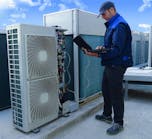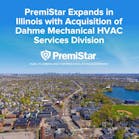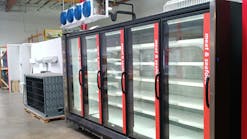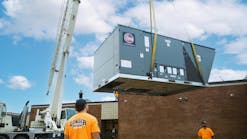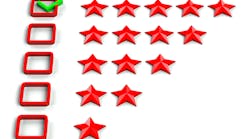Many skeptical prospective customers will not believe their present program is inadequate, and, often choose to stay with the ‘incumbent’ service provider. I have found and developed a method by which I show the prospect that their present program does not have enough hours to do a thorough PM.
The best way to introduce this method to my readers is by using an actual case study.
Review Existing Program Cost
1) I begin by discovering what their present maintenance program is costing. Yes, many prospects are not willing to share this number, but if you have the hours and visits per year, it’s easy to calculate. Sales persons should always know what their primary competitions street rate is. By doing the simple math, I discovered that the prospect is spending $1,500 per year on their program. You already know that this number is extremely light.
2) The next step is to establish how many visits per year they presently are receiving. In our example it’s four inspections per year.
3) The third step is listing the number of units. There were six roof top units (I simply go on line and zoom down on their roof).
4) I then develop the maintenance allocations. “Filter labor” is the first category. This is the labor it takes to change all filters four times a year. The total for the year (at 15 minutes per unit/per inspection) becomes six hours per year for filter labor. To get to the job site and return would be 2 two hours per year for travel labor.
5) Next is set-up time. This is the time it takes to park the truck, take new filters to the roof and sign out with the manager. For this, I used 15 minutes per trip, or another one hour per year. This example would require at least nine hours per year just to change the filters.
I multiply the total filter labor hours (9) by the competitor’s published street rate of $100.00 — which is $900 for total filter labor cost.
6) Next, I add “truck expense,” which is four trips multiplied by a $50.00 trip charge, for a total of $200.00 per year in travel expense.
7) I then present the filter material costs. In our example, there are 16 filters, multiplied by four changes, or 64 filters per year.
8) I then multiply the filter count by cost per filter. I used $5.50, making the annual filter material cost $352.00.
My list looks like this:
Total labor for filter changes ........ ..$900.00
Truck expenses......................................$200.00
Filter material..........................................$352.00
TOTAL…………….................................$1,452.00
This figure represents just what a minimal filter program would cost. By subtracting this number ($1,452.00) from their present program costs ($1,500) leaves us with $48.00 to accomplish the many PM tasks required each year.
9) My next step really puts everything into clear perspective. I divide the $48.00 by the number of units (6) which comes to $8.00. I convert this to hours by dividing the hourly rate ($100.00) into the amount available to spend per unit, per year ($8.00), which is .16 hours.
10) Then, I divide once again by the number of inspections (4) which is .04 hours. This comes up to just over two and a half minutes per unit/per inspection.
At this time I show my prospect my extensive PM task list. I ask the customer how far down the list their present provider can go on two and a half minutes.
This has numerically displayed that all the prospect has in place is a filter contract being sold as a comprehensive preventive maintenance agreement. Now I display pictures of faulty equipment, so that the prospect can see the results of filter-only maintenance. I actually created a form that includes all of the equations along with explanations. This lends more authenticity to the presentation.
This might seem like taking it to the absurd, however, it’s proven effective many times, if not most of the time.
Earl King is the founder of King Productions International, a commercial HVAC contracting sales consulting firm based in Texas. He speaks to associations and HVAC trade groups, and consults with commercial contractors across the country. E-mail Earl at: [email protected] or call him at 515/321-2426.
